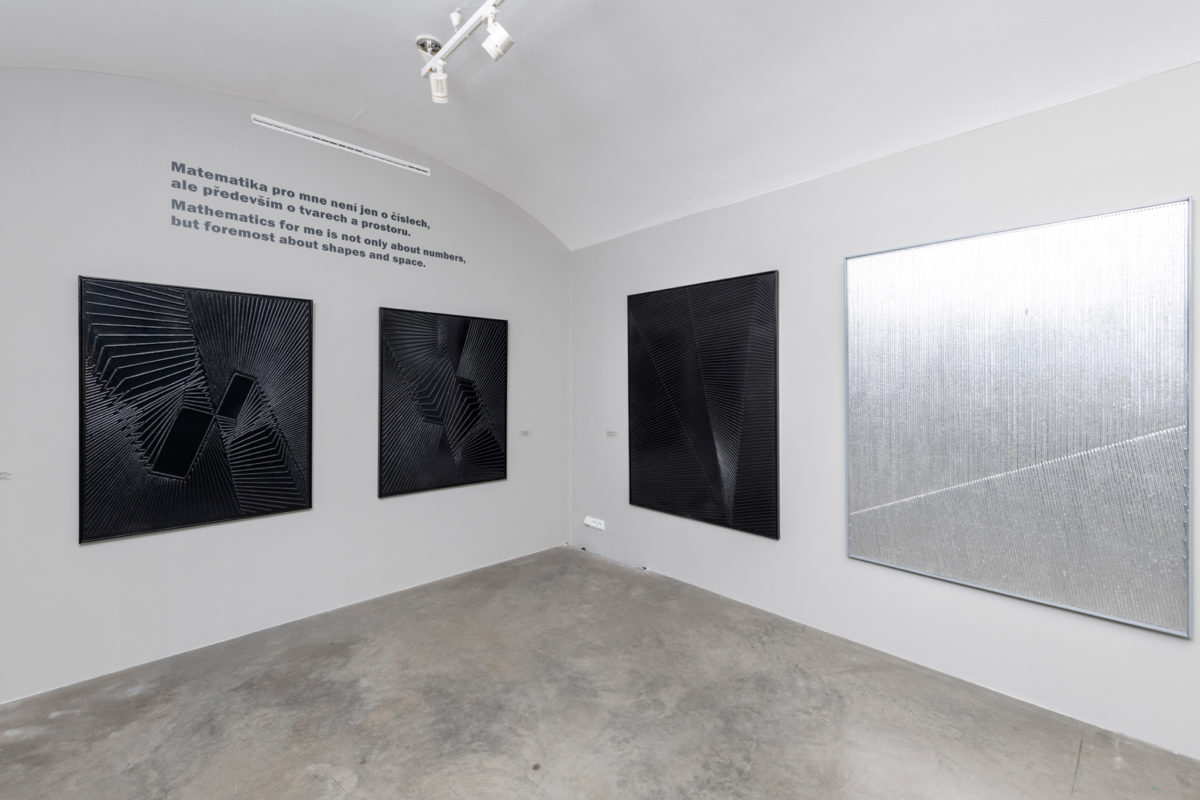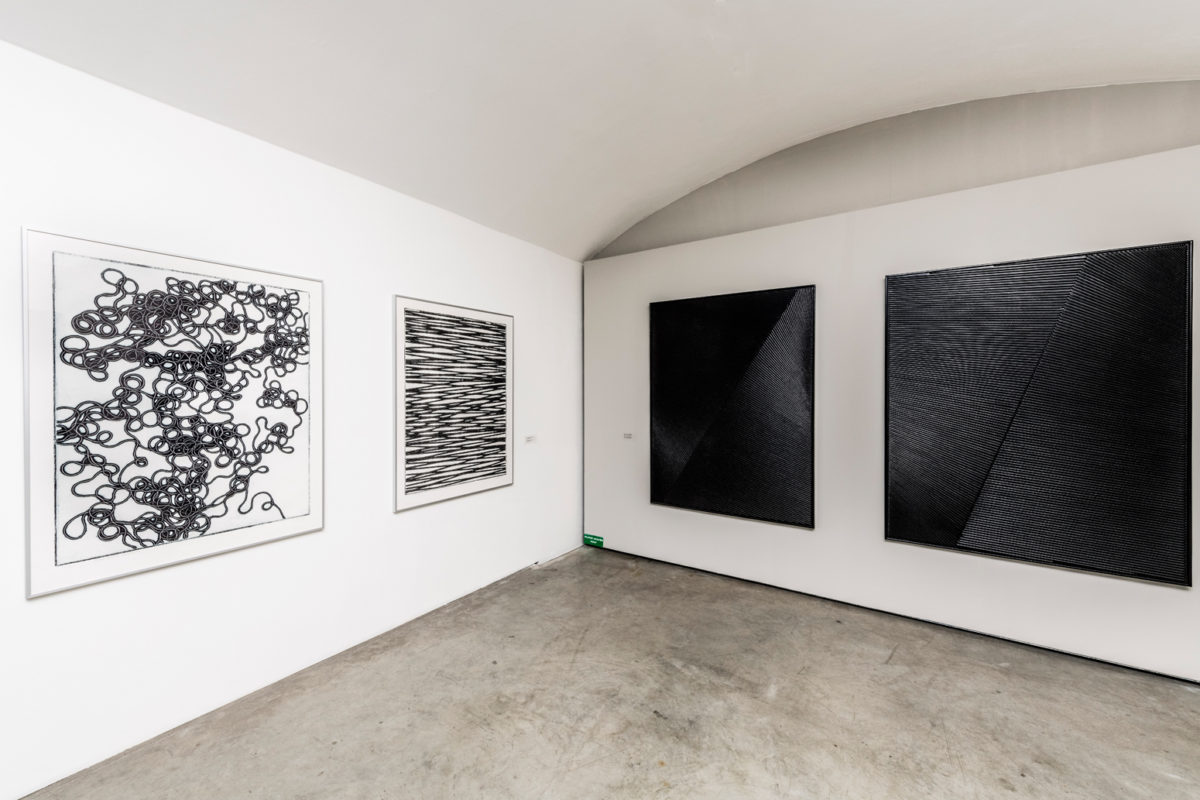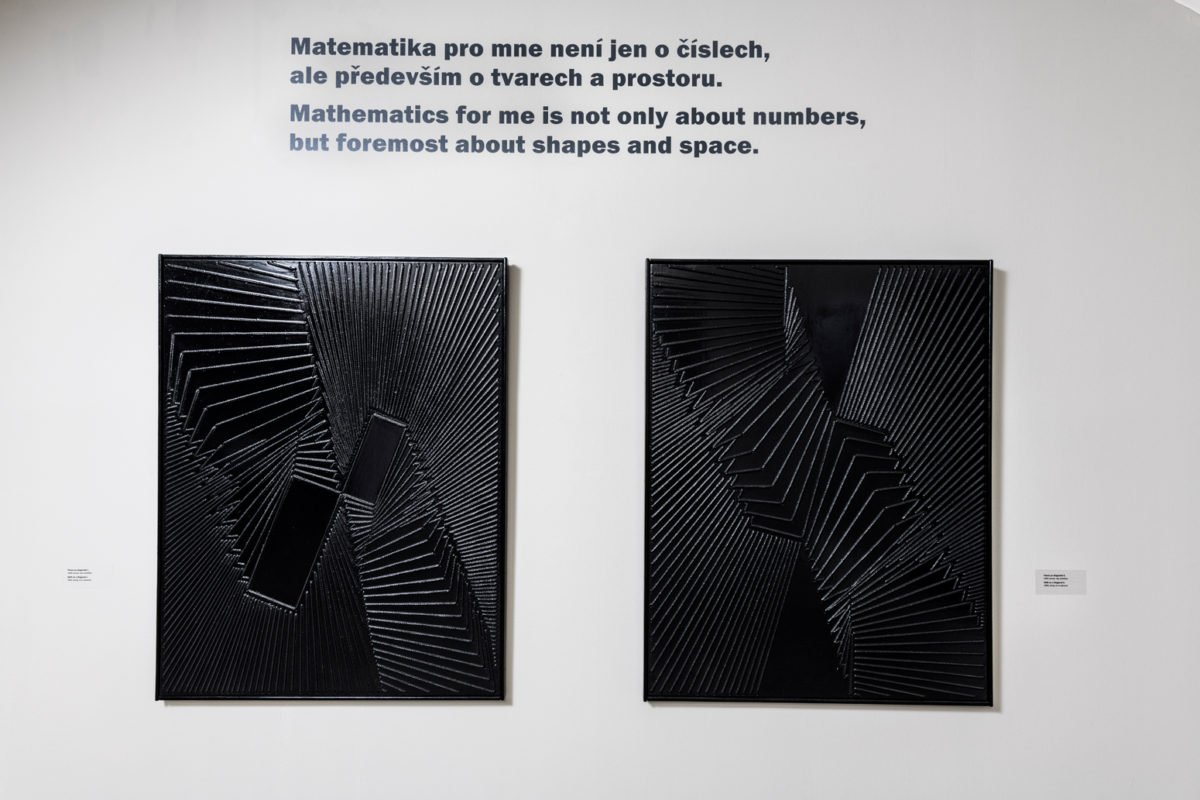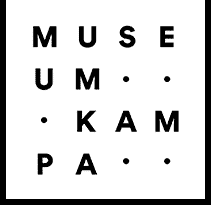Lubomír Přibyl (1937) belongs to the circle of authors who work with the reductive form. He first appeared on the art scene in the late 1950s with material prints in which sand was fixed on the matrix. He formed the sand into geometric shapes (triangles, rectangles and lines) as well as character or totemic forms and then imprinted there result onto paper. The artist also used archetypal motifs in paintings on canvas from the same period, which referred both to the art of primitive nations and the way of thinking of the founders of Modernism.
Since the early 1960s, Lubomír Přibyl has moved from the canvas to plywood, which he has been using to this day. First, he would pour the image surface over with the sand, forming elementary shapes such as parabola, segments or lines. The image surface was then covered with black oil paint or aluminium strips. By contrast between the structural fields and the smooth surfaces, he managed to achieve the illusion of a three-dimensional space. Throughout his subsequent work, Přibyl has developed the themes of space, its possibilities and changes. Since the mid-1960s, in addition to imprints of material texture (such as jute, fishing net, ropes etc.) on the surface of the paper, Přibyl’s studio has been seeing the emergence of paintings created by a network of cords. The artist drills through the underlying surface in a premeditated matrix and threads the cord through the individual holes. The resulting texture gives the impression of space which can be considered either very simple, consisting of angled and condensed diagonals and spatial plans, or complicated, arising from the cuts and displacements of three-dimensional objects.
The present inextensive exhibition at the Kampa Museum focusing on Přibyl’s works from the turn of 1960s presents the crucial period of the artist’s creative activity. The artworks of that time originated during a progressive era when structural abstraction was replaced by the emergence of trends oriented towards rationalism. Within the latter, Přibyl’s work is a phenomenon specific and not yet fully acknowledged. It is characterized primarily by the observance of a clearly defined programme, in which strong conceptual thinking is intertwined with a sense of material and experiment. It is no wonder that, as early as 1961, the artist took part in an international show in Ljubljana, Slovenia, where he made his introduction to art theorists from abroad. They then watched and continuously presented Přibyl’s work in both collective and author exhibitions, even at a time when Czechoslovak culture was devastated by the consequences of the so-called normalization after the Soviet invasion in1968.
Ilona Víchová, Exhibition Curator



